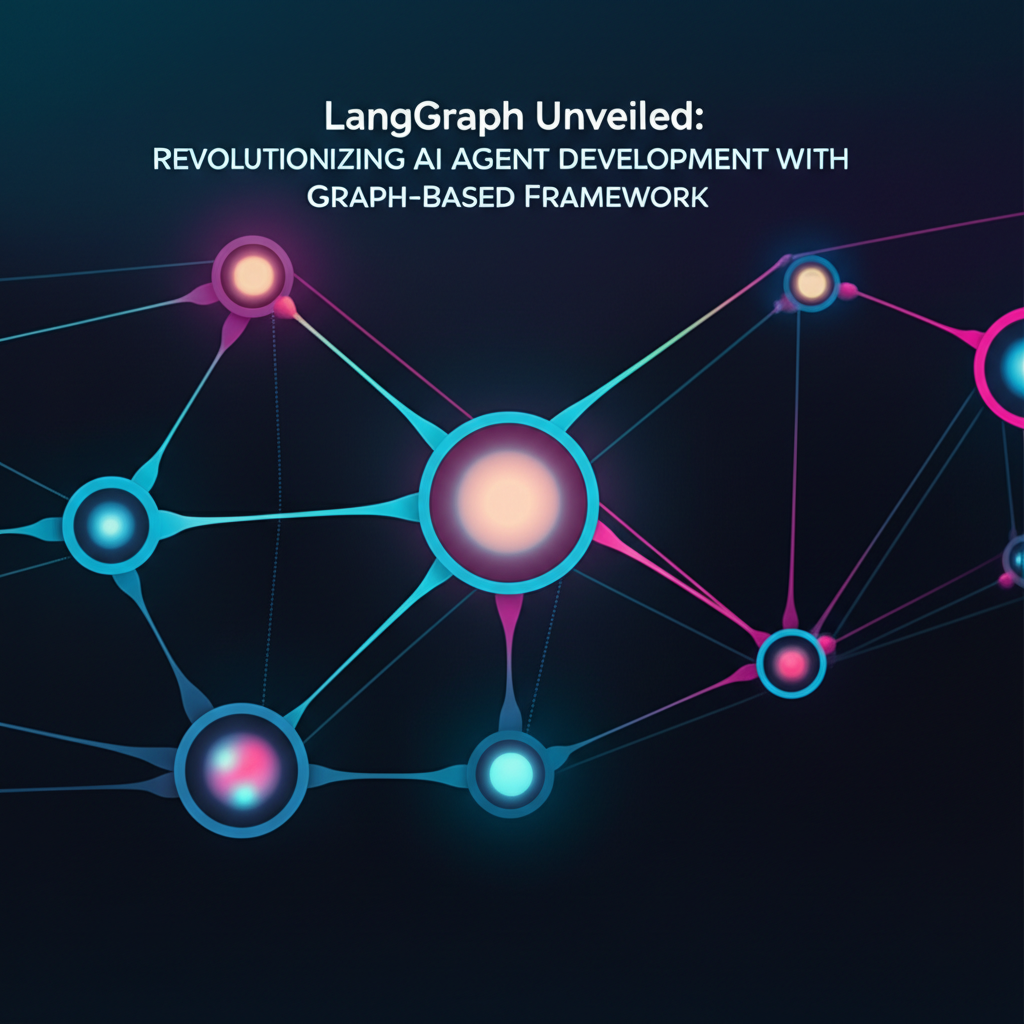LangGraph Revolutionizes AI Agents with Graph-Based Framework

LangGraph Unveiled: Revolutionizing AI Agent Development with Graph-Based Framework In a significant leap forward for artificial intelligence development, LangChain has introduced LangGraph, a novel framework that leverages graph structures to orchestrate and manage AI agents
Background
This innovative approach promises to streamline the creation of complex, multi-agent systems, offering developers greater control and flexibility over their AI applications
LangGraph represents a paradigm shift in how AI agents are designed and deployed.
By representing agent interactions and workflows as graphs, LangGraph allows developers to visualize, debug, and optimize their AI systems more effectively
This not only accelerates the development process but also opens up new possibilities for creating more sophisticated and adaptable AI solutions.
The potential impact spans numerous industries, from customer service and finance to healthcare and education
Traditional AI agent development often involves complex, hard-to-manage codebases.
As AI systems become more sophisticated, the challenges of coordinating multiple agents and ensuring their seamless interaction increase exponentially
LangChain, a popular framework for building applications powered by language models, recognized this bottleneck and sought to provide a more intuitive and scalable solution
The limitations of existing frameworks prompted the development of LangGraph
Before LangGraph, developers relied on ad-hoc methods and custom solutions to manage agent interactions. This often resulted in brittle, difficult-to-maintain systems.
LangGraph addresses these challenges by providing a standardized, graph-based approach to agent orchestration.
Current Situation LangGraph allows developers to define the flow of information and interactions between AI agents as a graph
Each node in the graph represents an agent or a function, and the edges represent the flow of data between them.
This visual representation makes it easier to understand and debug complex AI workflows
Key features of LangGraph include: Graph-based representation: Provides a clear and intuitive way to visualize agent interactions.
State management: Simplifies the management of agent states and data flow
Flexibility: Supports a wide range of agent architectures and interaction patterns. Debugging tools: Offers tools for visualizing and debugging complex AI workflows.
According to Harrison Chase, CEO of LangChain, "LangGraph is a game-changer for AI agent development. It provides developers with the tools they need to build more sophisticated and reliable AI systems.
"LangGraph is a game-changer for AI agent development. It provides developers with the tools they need to build more sophisticated and reliable AI systems.
- Harrison Chase, CEO of LangChain Implications The introduction of LangGraph has several significant implications for the AI industry: Accelerated development: Simplifies the creation of complex AI systems, reducing development time and costs. Improved reliability: Enables developers to build more robust and reliable AI applications.
Enhanced collaboration: Facilitates collaboration among developers by providing a common framework for agent orchestration.
New possibilities: Opens up new possibilities for creating more sophisticated and adaptable AI solutions
One potential application of LangGraph is in the development of more sophisticated customer service chatbots.
By using LangGraph, developers can create chatbots that can seamlessly handle complex customer inquiries, routing them to the appropriate agents and providing personalized support
Another potential application is in the development of AI-powered financial advisors.
These advisors can use LangGraph to analyze financial data, provide investment recommendations, and manage portfolios
Future Outlook The future of LangGraph looks promising. LangChain plans to continue to develop and enhance the framework, adding new features and capabilities.
The company is also working to build a community of developers around LangGraph, providing support and resources to help them build innovative AI applications
The long-term impact of LangGraph on the AI industry is likely to be significant
As AI systems become more complex, the need for robust and scalable agent orchestration frameworks will only increase.
LangGraph is well-positioned to become a leading solution in this space, driving innovation and accelerating the adoption of AI across various industries
In the coming months, expect to see more case studies and real-world applications of LangGraph emerge.
The framework's ability to streamline complex AI workflows and unlock new possibilities will undoubtedly attract the attention of developers and organizations looking to leverage the power of AI
The ongoing evolution of LangGraph and the growing community around it suggest a bright future for this innovative approach to AI agent development.
Conclusion LangGraph represents a significant advancement in AI agent development
By providing a graph-based framework for orchestrating and managing AI agents, LangGraph simplifies the creation of complex, multi-agent systems, offering developers greater control and flexibility
This innovation has the potential to accelerate AI adoption across various industries and unlock new possibilities for creating more sophisticated and adaptable AI solutions
As LangChain continues to develop and enhance LangGraph, its impact on the AI landscape is poised to grow even further.
